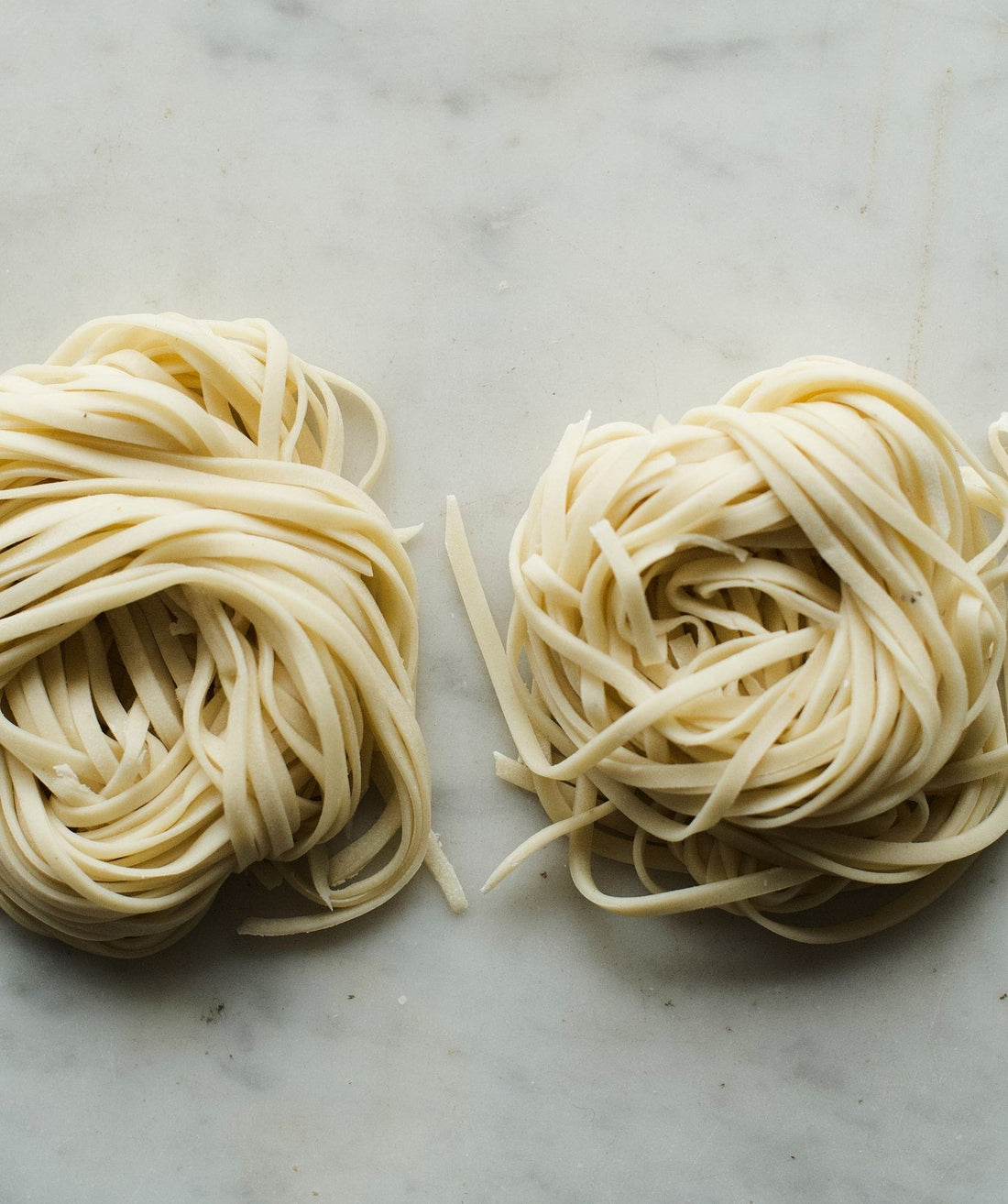How to make pasta dough

This pasta dough recipe is an extract from our cookbook, “A Handful of Flour” which you can find on page 197.
Sophia Loren credited spaghetti as being responsible for her incredible appearance. Now, I say to that 'I'll have whatever she's having'.
She also advised that, 'spaghetti can be eaten most successfully if you inhale it like a vacuum cleaner', I can vouch that the latter philosophy will most certainly prove successful for everyone, whether preternaturally beautiful or not. This is a kind of enthusiasm and enjoyment of food that I can relate to.
This recipe works both for traditional pasta with type 00 flour and, with some minor adjustments, it also works with Khorasan, white spelt and emmer. It is impossible to give precise measurements of liquid for all the flours, as the rate at which they absorb the liquid will vary depending on a variety of factors.
Making your own pasta requires minimal time and effort, and the taste and texture beat the ready-made packets of fresh pasta hands down. Whether you use a pasta maker or roll it yourself by hand, it's surprisingly fun to watch your pasta take shape and know that you have built your whole meal from scratch.
If you mix your pasta ingredients using a food processor instead of mixing them by hand, you may find you need to add less olive oil (or none at all), as an electric mixer can combine the ingredients into a dough very efficiently.
SERVES 4
400g Italian Organic type 00 flour
4 large eggs
a few drops of olive oil (only if necessary)
semolina flour, for rolling out the pasta
Sift your four into a large mixing bowl and create a well in the middle. Beat your eggs in a bowl. Pour just over half of the egg into the well and combine with the flour using your hands. You can do this in a food processor if you want to preserve your strength for kneading! Add the rest of the egg slowly, and stop if the dough is becoming too wet - you may not need to use it all. You want a relatively dry, breadcrumb-like texture.
Use your hands to mould the crumbs into a ball, place it on a work surface and knead it to work the glutens. It will form a very short dough, but be patient and keep kneading it until all the flour and egg have bound together to form a smooth ball. This can take up to 10 minutes. If the dough is too dry, you can add a tiny amount - just a few drops - of olive oil to help bring it together. Cover your ball in cling film and leave it to rest in a cool place for 45 minutes to 1 hour.
Cut the dough into two to four parts and roughly roll these out one at a time on a work surface lightly floured with semolina. Keep the dough you are not working with covered with a damp cloth to prevent it from drying out.
Depending on the type of pasta you are going to make, set your machine up and roll your dough through the machine. You may want to pass it through the first setting on the machine more than once to get it very thin. When it has been passed through this setting, you can fold it in half or into thirds, depending on the length, and pass it through a couple more times. This prevents it tearing, while attaining that silky smooth pasta texture. If necessary, dust the machine with some semolina to prevent the dough from sticking. Pass the dough through the setting required for the type of pasta you are making (e.g. spaghetti, tagliatelle), and arrange the pasta in nests on a work surface dusted with semolina while you complete the batches. Alternatively, if you are making a pasta such as ravioli, at this stage you would cut it into shapes.
To cook your pasta, bring a large pan of water to the boil with a pinch of salt and drop in your pasta. It will take approximately 3-3½ minutes to cook, depending on how al dente you like it.



